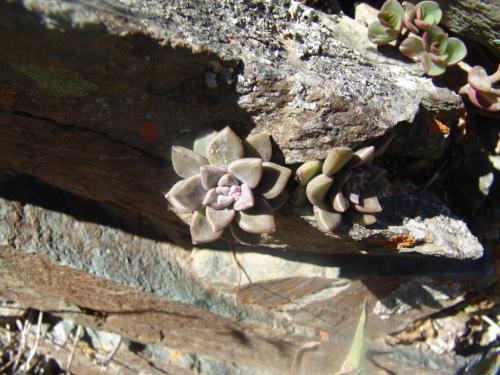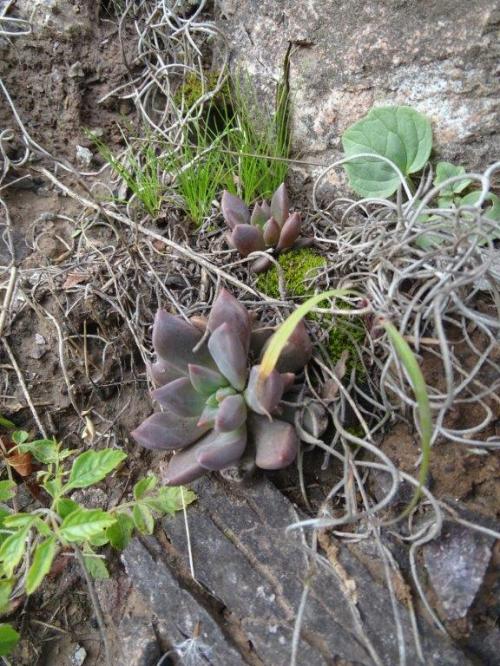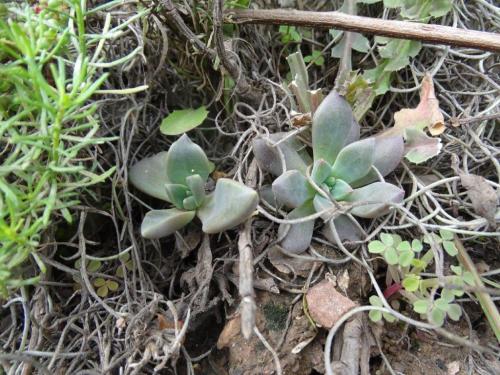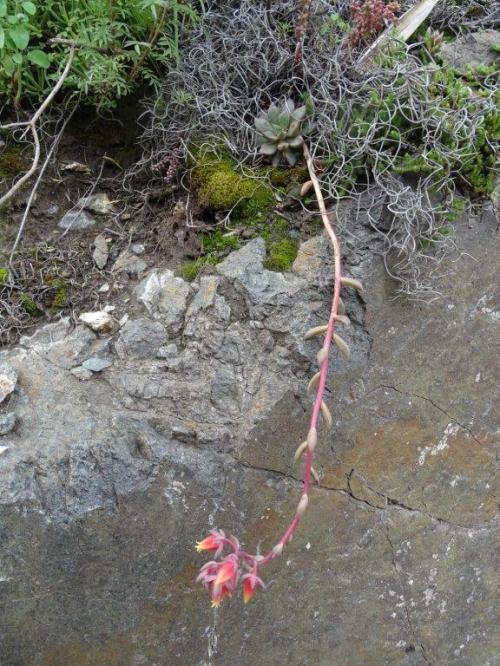WESTII Walther, 1972 (engl./ fr.)
Series Racemosae
Type : Hutchison 1800 (UC 1200467); Ollantaytambo, Prov. Urubamba, Dept. Cuzco, 3000 m, 1957.
Etymology : Named for James West who had first found this species.
Distribution : Peru (Cuzco); 3000m.
Description by Walther from a plant collected by James West on ruins of Ollantaytambo, flowered July 1938 :
Plants glabrous.
Stems short, but with evident lateral offshoots.
Leaves densely rosulate, rhomboid-obovate, cuneate at base, acute, thickish, upcurved, somewhat keeled beneath, above flat or slightly concave, not papillose, 30 to 35 mm long, 12 to 20 mm broad, at base 5 mm wide, with petiole nearly quadrangular in cross-section, dark olive-green, brownish near apex, not glaucous.
Inflorescences equilaterally racemose, but often congested and shortened into a few-flowered cyme, peduncle laxly ascending, to 25 cm tall, dark purplish-red, lower bracts most readily detached, broadly obovate-elliptic, acute, to 14 mm long and 8 mm broad, thick, convex on both sides, upper bracts conspicuous, enveloping buds, pedicels to 9 mm long, old-rose, bractlets to 9 mm long, oblong-lanceolate, acute, subterete or subtriquetrous, readily detached.
Flowers : Sepals subequal, longest to 10 mm long, obovate-oblong, acute, thick, dark olive-green, somewhat glaucous, corolla urceolate, 11 to 13 mm long, 8 mm in basal diameter, rose-doree at base, to pink, at apex golden yellow, petals with tips incurved, basal hollow distinct, nectaries reniform, to 2 mm wide.
Flowering time from July on.
Cytology : n = ± 260
Link to a summary of the above description in English and French.
E. westii at the type locality (Ollantaytambo ruins) :

Plants photographed from the road to Ollantaytambo near the detour to Pomatales :



Photos Guillermo Pino